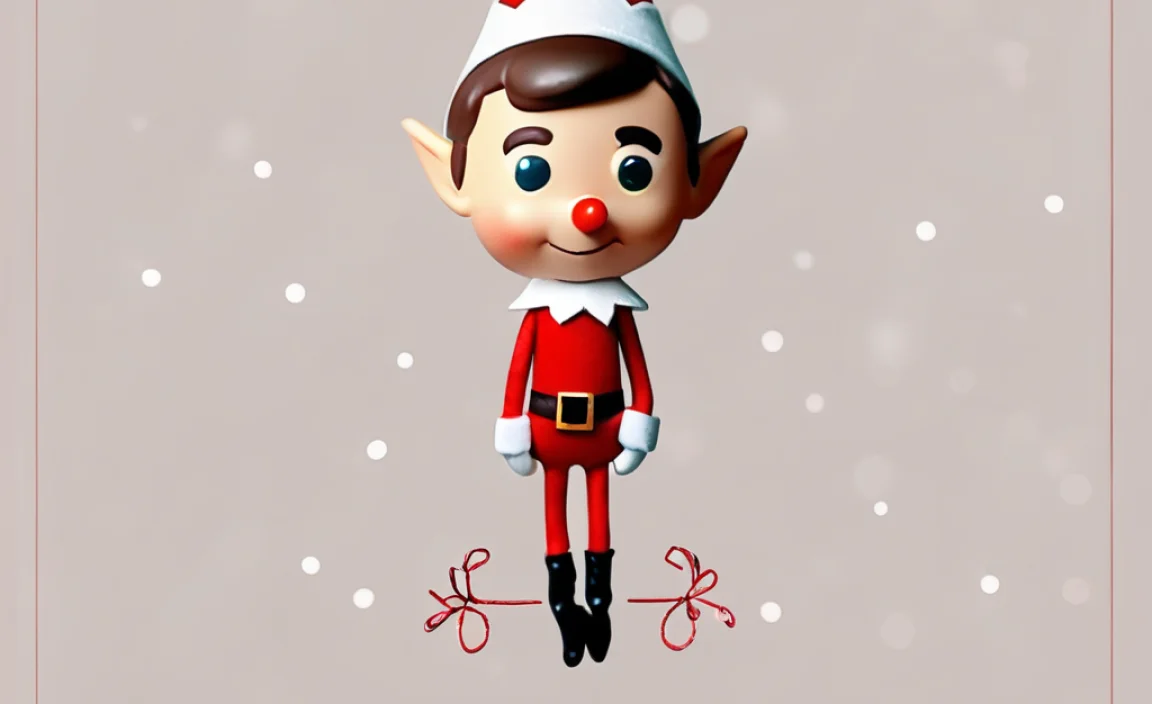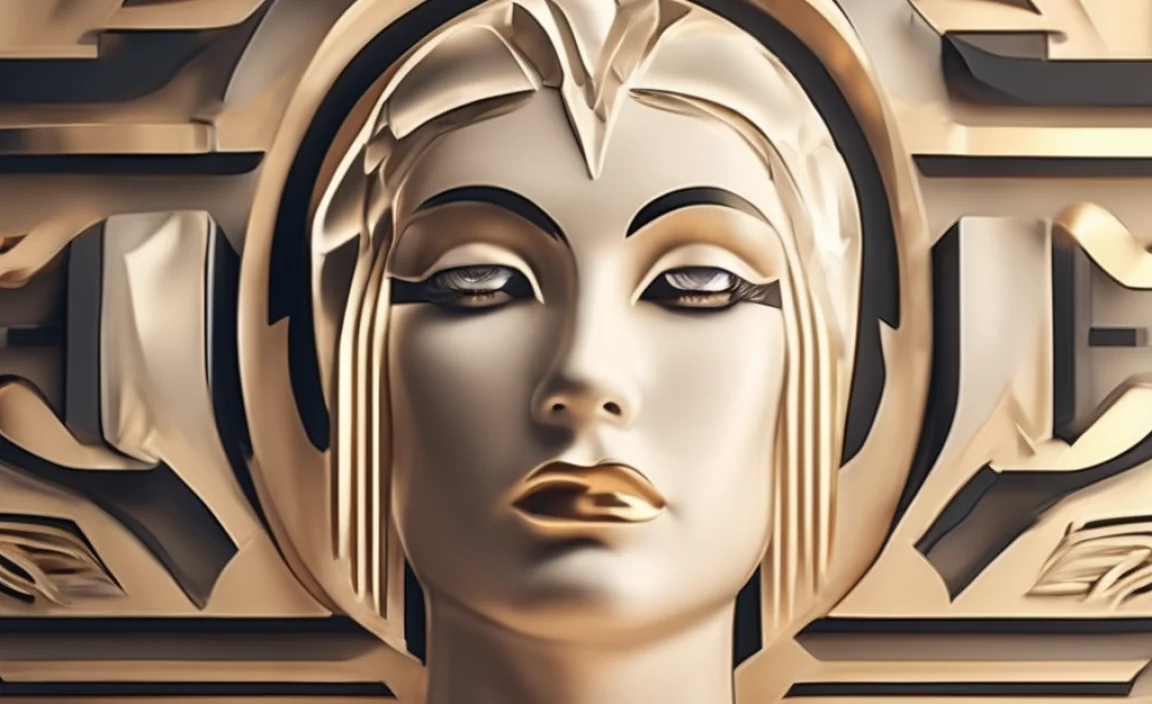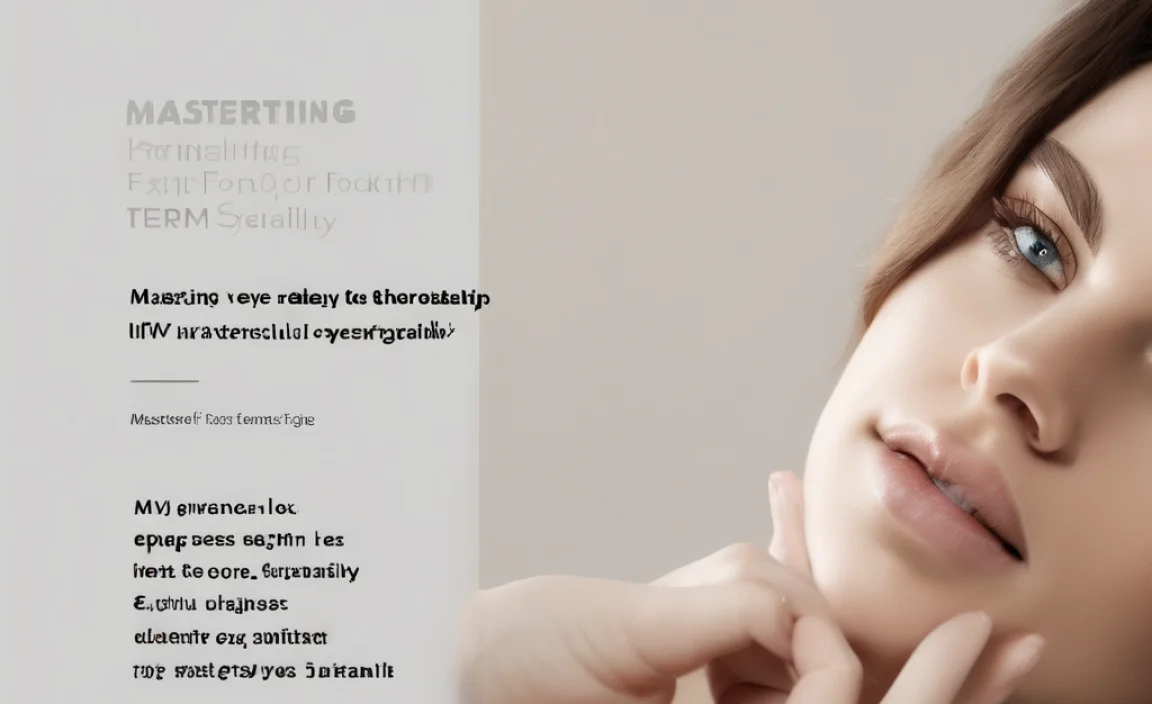The “Legend Font” isn’t a single typeface, but rather a concept: fonts that are timeless, instantly recognizable, and consistently used across iconic brands and designs. Mastering how to identify, use, and even create your own “legend” fonts unlocks powerful branding and design potential. This guide will walk you through it.
Typography can feel like a secret code sometimes, right? You see a logo, a book cover, or a website, and there’s just something about the text that grabs your attention. It feels strong, memorable, and perfectly suited. That, my friends, is the power of a “legend font.”
We’re not talking about a specific font named “Legend.” Instead, we’re exploring the qualities that make a typeface achieve legendary status – becoming a go-to for impactful design. Maybe you’re a student just starting with fonts, a blogger wanting to boost your brand’s look, or a designer searching for that perfect, enduring choice. Whatever your reason, you’ve come to the right place!
Many people feel overwhelmed by the sheer number of fonts available. It’s easy to stick with what’s default or pick something that catches the eye without thinking about its long-term impact. This can lead to designs that feel quickly dated or lack a strong identity. But don’t worry! By understanding what makes a font legendary, you can make smarter, more confident design decisions.
This guide will break down the essence of “legend fonts.” We’ll uncover their characteristics, explore famous examples, and give you practical tips on choosing and using them effectively. Get ready to elevate your design game and discover the fonts that stand the test of time!
What Exactly Is a “Legend Font”?
Think of “legend fonts” as the rockstars of the typeface world. They are fonts that have achieved iconic status due to their widespread use, distinctive character, and enduring appeal. These fonts often possess a unique blend of personality and readability that makes them instantly recognizable and highly effective across various design applications.
They aren’t just pretty; they have a story and a purpose. A legendary font communicates a specific feeling or attitude. It can be bold and authoritative, elegant and sophisticated, or quirky and playful. The key is that it does so consistently and memorably.
The Hallmarks of a Legendary Font
What sets these fonts apart? It’s a combination of factors that contribute to their lasting power.
Distinctive Character
A legendary font usually has a unique personality. It’s not generic. This could be through its shape, its serifs, its weight, or its overall mood. Think of the sharp, confident lines of a font like Futura or the classic, authoritative presence of Times New Roman.
Exceptional Readability
Even the most distinctive font won’t become a legend if people can’t read it easily. Legendary fonts are crafted with legibility in mind, ensuring they work well for both short headlines and long blocks of text. This balance between personality and clarity is crucial.
Versatility
The best fonts can adapt. They look great on a tiny business card, a massive billboard, a website header, and in a lengthy report. This adaptability means they can serve multiple purposes within a brand or project.
Timelessness
Unlike fleeting design trends, legendary fonts often transcend eras. They don’t necessarily feel “new” or “modern” in a trendy way, but rather possess an inherent quality that keeps them relevant year after year. They might have historical roots, but they still feel fresh.
Memorability
This is where a font truly earns its legend status. When people see it, they recall the brand or message associated with it. It becomes part of the visual identity, instantly evoking associations.
Famous Examples of Legendary Fonts (and Why They Work)
Let’s look at some real-world examples that demonstrate these qualities. These fonts are more than just letters; they are design icons.
Serif Legends: The Classics with Character
Serif fonts have small decorative strokes (serifs) at the end of their letterforms. They often convey tradition, authority, and readability for extended text.
Garamond: One of the oldest and most respected serif typefaces. It’s known for its elegant, humanist design and excellent readability. Garamond feels sophisticated and learned, making it a favorite for books, academic papers, and high-end branding. Its subtle curves and balanced proportions create a harmonious reading experience.
Times New Roman: Originally designed for The Times of London newspaper, this font is a champion of readability in print. Its condensed form allows for more text on a page, and its clear serifs guide the eye. It evokes a sense of authority, tradition, and clarity, making it a ubiquitous choice for reports, legal documents, and formal communications.
Bodoni: A dramatic and stylish serif font from the late 18th century. Bodoni features extreme contrasts between thick and thin strokes, with delicate, unbracketed serifs. It’s often used for high-fashion magazines and luxury brands where a sense of elegance, drama, and modernity is desired. It’s less suited for body text but shines in headlines and display.
Sans Serif Superstars: The Modern Stalwarts
Sans serif fonts lack serifs, giving them a cleaner, more modern look. They are often perceived as friendly, approachable, and highly legible on screens.
Helvetica: Perhaps the most famous sans serif ever created. Helvetica is celebrated for its neutrality, clarity, and incredible versatility. It’s clean, crisp, and possesses a calm, objective feel. This makes it perfect for corporate branding, public signage, and almost any design context where straightforward communication is key. Its widespread use by giants like NASA and American Airlines solidifies its legend status.
Futura: A geometric sans serif inspired by Bauhaus design principles. Futura features clean, circular shapes and a minimalist aesthetic. It feels modern, forward-thinking, and optimistic. It’s often used for branding that aims to be sleek and innovative, as well as for movie posters and titles where a bold, geometric statement is needed. Its geometric purity is its enduring appeal.
Univers: Another highly versatile and rational sans serif. Developed in the mid-20th century, Univers was designed with a vast family of weights and widths, allowing designers great control. It’s known for its clarity, warmth, and subtle elegance, making it suitable for everything from road signs to sophisticated branding.
Display & Script Fonts: The Statement Makers
While often used sparingly, some display and script fonts achieve a legendary status for their unique impact.
Bickham Script Pro: A beautiful, formal script font that emulates 18th-century English roundhand calligraphy. It’s often seen in wedding invitations, elegant stationery, and high-end branding that requires a touch of refined artistry and tradition. Its flowing curves and sophisticated penmanship make it instantly recognizable.
Cooper Black: A heavy, rounded serif font from the early 20th century. Cooper Black has a warm, friendly, and somewhat whimsical character. It was incredibly popular in the 1970s and is now often used for a retro or nostalgic feel, particularly in branding for food, music, and children’s products. It’s undeniably bold and attention-grabbing.
How to Choose Your Own “Legendary” Font
Selecting a font that has the potential to become part of your brand’s legacy involves thoughtful consideration. It’s about more than just aesthetics.
Step 1: Understand Your Brand’s Personality and Message
Before you even look at fonts, ask yourself:
What is the core message of my brand or project?
What emotions do I want to evoke? (e.g., trust, excitement, calm, luxury, innovation)
Who is my target audience? What kind of typography resonates with them?
A font for a law firm will differ greatly from one for a children’s toy company.
Step 2: Consider the Application
Where will this font be used most?
Primarily for headlines and logos? You can afford to be more adventurous with display or more distinctive fonts.
For extensive body text (website content, books)? Readability is paramount. Choose a font designed for long-form reading.
For both? You’ll likely need a font family with multiple weights and styles, or a pairing of a strong display font with a highly readable body font.
Step 3: Test for Readability and Legibility
This is non-negotiable.
Readability: How easy is it to read for long periods? This is affected by factors like x-height, ascender/descender length, and letter spacing.
Legibility: How easy is it to distinguish individual letters from one another? This is crucial for avoiding confusion between similar characters (like ‘I’, ‘l’, ‘1’ or ‘O’, ‘0’).
Try setting a paragraph of text in your potential font. Does it feel comfortable to read?
Step 4: Assess Versatility and Timelessness
Scalability: Does the font look good at very small sizes (like on a favicon) and very large sizes (like on a billboard)?
Weight and Style Variety: Does the font family offer different weights (light, regular, bold) and styles (italic)? This provides flexibility for hierarchy and emphasis.
Trend vs. Timelessness: Does the font feel like a fleeting trend, or does it have a classic appeal that will endure?
Step 5: Explore Font Pairing
Often, a single font isn’t enough. A legendary look often comes from combining two complementary fonts.
Contrast is Key: Pair a serif with a sans serif, or a more decorative font with a simple, clean one.
Harmony Matters: Ensure the fonts share some underlying aesthetic or mood. They should feel like they belong together.
Hierarchy: Use one font for headings and another for body text to guide the reader’s eye.
A great resource for understanding font pairings is Google Fonts. They offer a vast library of free fonts and even have a helpful pairing tool. You can explore fonts and see how they look together, all within your browser.
Popular Font Categories and Their “Legendary” Potential
Understanding font categories helps you narrow down your choices and identify fonts that excel in specific roles.
Serif Fonts
These fonts have small decorative strokes (serifs) at the ends of letterforms. They often evoke tradition, authority, and a sense of history.
Pros:
- Excellent readability for long blocks of text in print.
- Convey a sense of trustworthiness, tradition, and sophistication.
- Can add a classic, elegant feel to designs.
Cons:
- Can sometimes appear less modern or dated if not chosen carefully.
- Less ideal for very small screen displays where serifs can become blurry.
Legendary Potential: Perfect for academic publications, novels, legal documents, and brands aiming for a heritage or luxury feel.
Sans Serif Fonts
These fonts lack serifs, giving them a clean, modern appearance. They are often perceived as approachable, direct, and highly readable on screens.
Pros:
- Exceptional clarity and readability on digital screens.
- Feel modern, minimalist, and straightforward.
- Highly versatile for branding, web design, and user interfaces.
Cons:
- Can sometimes feel impersonal or generic if a unique sans serif isn’t chosen.
- May lack the traditional gravitas of serif fonts for certain applications.
Legendary Potential: Ideal for corporate branding, web design, mobile apps, signage, and modern publications.
Slab Serif Fonts
Slab serifs, also known as Egyptian fonts, have thick, block-like serifs. They are bold and strong.
Pros:
- Very distinctive and impactful, especially for headlines.
- Can convey a sense of robustness, reliability, or a vintage industrial feel.
- Good readability for display purposes.
Cons:
- Can be too heavy or clunky for extensive body text.
- May feel dated or overly niche depending on the specific design.
Legendary Potential: Great for bold headlines, branding with a retro or industrial vibe, and creating strong visual statements.
Script Fonts
Script fonts mimic handwriting or calligraphy. They range from elegant and formal to casual and playful.
Pros:
- Add a personal, artistic, or elegant touch.
- Can evoke specific moods like romance, celebration, or a handcrafted feel.
Cons:
- Generally poor readability for body text; best for short titles or accents.
- Can easily feel unprofessional or overused if not applied thoughtfully.
Legendary Potential: Excellent for wedding invitations, luxury brands, restaurant menus, or any design needing a touch of flourish and personality.
Display Fonts
These are highly decorative and attention-grabbing fonts designed for large sizes and short bursts of text, like headlines or logos.
Pros:
- Unique and memorable, can define a brand’s character.
- Incredibly versatile in terms of style and mood.
Cons:
- Almost always unsuitable for body text due to complexity or legibility issues.
- Can quickly become dated if they are too trend-focused.
Legendary Potential: Fantastic for creating a strong brand identity, event posters, and striking advertising. Think of fonts like the playful Cooper Black or the geometric Futura. Google Fonts offers extensive guidance on display font usage.
Tips for Using Fonts Like a Legend
Once you’ve chosen a font, or a font pairing, how do you ensure it shines?
Master Typography Hierarchy
Use different font weights, sizes, and styles to guide the reader’s eye.
Headlines: Larger, bolder, more attention-grabbing.
Subheadings: Slightly smaller than headlines, often a different weight from the body text.
Body Text: Readable size, standard weight, clear spacing.
Captions/Accents: Smaller size, might use italics or a lighter weight.
A clear hierarchy makes content digestible and professional.
Pay Attention to Spacing (Kerning, Leading, Tracking)
Kerning: The space between individual letter pairs. Some fonts have poorly kerned pairs (like `AV` or `To`). You may need to adjust these manually for headlines.
Leading: The vertical space between lines of text. Too little can make text feel cramped; too much can make it feel disconnected.
Tracking: The overall spacing of a block of text. Adjusting tracking can improve both readability and a font’s aesthetic cohesiveness.
Many design programs allow for these adjustments. Even subtle tweaks can make a big difference.
Use Font Weights Strategically
A font family with multiple weights (light, regular, bold, black, etc.) is incredibly powerful.
Use bold for emphasis on key terms within body text.
Use light weights for a more airy, elegant feel in titles or secondary information.
Use regular for your primary content.
This internal variation without switching fonts can create immense visual interest and order.
Embrace Contrast and Harmony
As mentioned in pairing, aim for a balance.
Contrast: Pairing a sturdy serif with a clean sans serif creates visual interest.
Harmony: Ensure the two fonts don’t clash. They should feel like they complement each other, perhaps by sharing a similar historical period or a certain mood.
For example, a modern geometric sans serif like Lato can pair well with a classic serif like Merriweather for a balanced, contemporary feel.
Consider Accessibility
A truly great font is usable by everyone.
Ensure sufficient contrast between text color and background color. Contrast ratios are important for readability, especially for users with visual impairments. The Web Content Accessibility Guidelines (WCAG) provide standards for this.
Avoid overly decorative or condensed fonts for body text, as they can be difficult to read for many users.
Less is Often More
Resist the urge to use too many fonts.
One font: If it’s a versatile font family with many weights and styles (like Open Sans or Montserrat), you can create a complete design system with just one.
Two fonts: A classic and highly effective approach. One for headlines, one for body.
* Three fonts: Maximum for most projects. Use sparingly, perhaps for different levels of hierarchy or distinct elements.
Overloading a design with fonts creates visual chaos and dilutes your message.
When to Customise or Create Your Own
Sometimes, even the best existing fonts aren’t quite right. This is when the idea of a “legend







